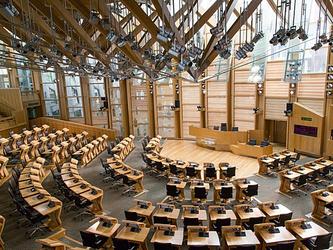Population of England and Wales rises and ages, finds census

The census, which was carried out on 21st March 2021, found the population of England and Wales was at 59,597,300, with all but 3.1 million in England.
All nine regions of England grew, according to the census, as did the population of Wales, albeit Wales had lower population growth than all English regions.
Wales’ population increased by 1.4% – a gain of approximately 44,000 people – and was slightly lower than the rate of growth in the northeast of England, which rose by 1.9% and was the English region with the lowest population growth.
The East of England registered the highest population growth, with an 8.3% rise from 2011, equating to a gain of more than 488,000 residents.
The areas with the largest population decreases were the London boroughs of Kensington and Chelsea ( 9.6% decrease) and Westminster ( 6.9% decrease).
The areas with the highest rates of population growth were London’s Tower Hamlets ( 22.1% increase) and Dartford in Kent ( 20% increase).
The census found that 11.1 million people ( 18.6%) were aged 65 or over, up from 9.2 million ( 16.4%).
The number of people aged 90 or older was at 527,900 people ( 0.9%), which was almost 98,000 more than in 2011.
Under-15s accounted for 17.4% of the population ( 10.4 million), up from 9.9 million in 2011 but a smaller proportion of the population (previously 17.4%).
Nearly two-thirds ( 64.1% or 38.2 million people) of the population in 2021 were aged 15 to 64 years, which was more than the 37 million people in 2011 but a slight decrease as a proportion of the population ( 65.9% in 2011 ).
The percentage of the population aged 65 years and over was higher in Wales ( 21.3%) than in England ( 18.4%) in 2021.
The only English region with a larger percentage of the population aged 65 years and over than Wales was the southwest at 22.3%.
London was the region with the lowest percentage of the population aged over 65, with 11.9% of the population falling into this age category.
Across England and Wales, the local authorities with the highest percentages of the population aged 65 years and over were North Norfolk ( 33.4%) and Rother ( 32.4%).
East Devon had the highest percentage of the population aged 90 years and over ( 1.9%), followed by Rother ( 1.8%).
London had the largest percentage of people aged between 15 and 64 years ( 70.0%).
Women made up 51% of the population at more than 30.4 million, compared with 29.2 million men.
Overall, there were 24,782,800 households in England and Wales on the day of the census, a 1.4 million increase since 2011.
Scotland and Northern Ireland hold separate censuses, with Scotland postponing its census a year to 2022 due to the pandemic.
The census for Northern Ireland was carried out on the same day as that for England and Wales, and the results were released earlier this year.
The population of Northern Ireland on census day was 1,903,100, while the number of households in Northern Ireland was 768,900.
The number of people aged 65 or more in Northern Ireland rose by more than 60,000 to nearly 333,000 people – a near 25 per cent increase on 2011.
In contrast, the number of young children aged four or under decreased by nine per cent from the last Northern Ireland census.

We hope you enjoyed this article.
Research Live is published by MRS.
The Market Research Society (MRS) exists to promote and protect the research sector, showcasing how research delivers impact for businesses and government.
Members of MRS enjoy many benefits including tailoured policy guidance, discounts on training and conferences, and access to member-only content.
For example, there's an archive of winning case studies from over a decade of MRS Awards.
Find out more about the benefits of joining MRS here.














0 Comments